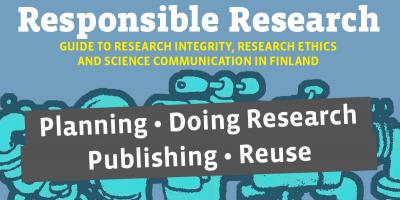Encountering and preventing hate speech is an occupational safety and health issue.
It is known that a fear of hate speech causes withdrawal from public life. It is also known that researchers can also find themselves victims of hate speech. It is very harmful if people’s choice of research subject and willingness to publish their research findings is affected by fear. However, preventing hate speech is difficult, partly because in Finland there is no official definition of what hate speech is and hate speech as such is not mentioned in the Criminal Code of Finland. Legislation mainly intervenes where there is a risk of agitation. This and equivalent criminal acts against others are spread through legislation, mainly in different sections of the Criminal Code. However, Finland has undertaken to prevent the public occurrence of hate speech and its dissemination, in the manner required of us by several international conventions on human rights.
Plenty of teaching material available
Hate speech is a problem and there is an astonishingly large amount of high-quality teaching material intended for those of school age for handling, understanding and preventing it. Links to dozens of ready-made teaching materials, as well as research and legislation can be found in the report Disinformaatio, vihapuhe ja mediakasvatuksen keinot (Disinformation, hate speech and methods of media education). A link to the report is provided at the end of this text. Many of the materials can be applied directly, or modified to work in researcher education too.
Encountering and preventing hate speech is an occupational safety and health issue, not a personal problem and a source of shame for an individual researcher.
In the summary of the report, experts from Osuuskunta Mediakollektiivi (Cooperative Mediakollektiivi) stated that the problem in controlling hate speech is adults, not children. Firstly, adults are not covered by the extensive media education provided within the school system and there may be a more urgent need for education among part of the adult population. There is a need for functioning tools and methods that can be used by the whole of society, especially in curbing hate speech on social media. Secondly, the attitudes and actions of “responsible adults”, such as those who exercise power in society and people with a highly visible public profile, in relation to hate speech play a key role. Preventing the hate speech that researchers encounter is only in its infancy, both in terms of the methods available and attitudes.
The responsibility of occupational health and safety
It took a long time for the “Don’t blame the victim” principle to become mainstream in combating sexual and domestic violence and resolving problematic situations. A researcher who has become the target of hate speech should also receive support from their support network, e.g. from the workplace community and colleagues. Support and help should be easily and immediately available, so that anyone who has become a victim of hate speech needs not to feel abandoned, and should especially not think that it was their fault.
Encountering and preventing hate speech is an occupational safety and health issue, not a personal problem and a source of shame for an individual researcher. At the moment, there are no clear procedures in place, but they are definitely currently being created within different research institutions and research communities. Ask about them! A good workplace community takes precautions against hate speech as it does regarding any other occupational health and safety risk.
Maija Töyry, Docent of Media Research, founding member of the Osuuskunta Mediakollektiivi
Further information:
Töyry, Maija (ed.) and Osuuskunta Mediakollektiivi 2016: Disinformaatio, vihapuhe ja mediakasvatuksen keinot. http://koulukino.fi/index.php?id=3705
You might also be interested in
Tämä teos on lisensoitu Creative Commons Nimeä 4.0 Kansainvälinen -lisenssillä. Detta verk är licensierat under en Creative Commons Erkännande 4.0 Licens. This work is licensed under a Creative Commons Attribution 4.0 International license.

